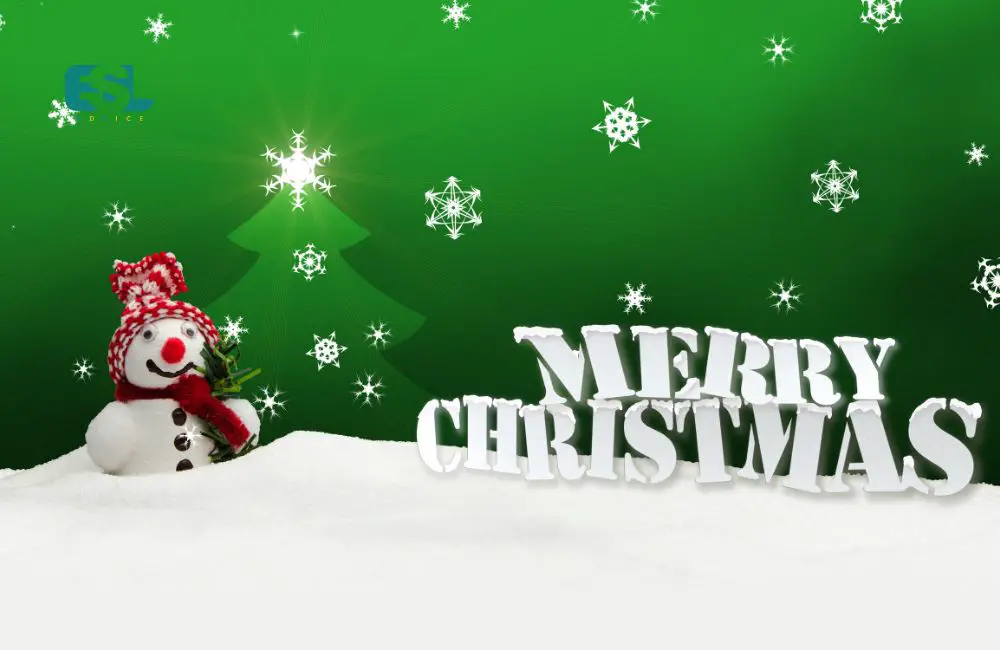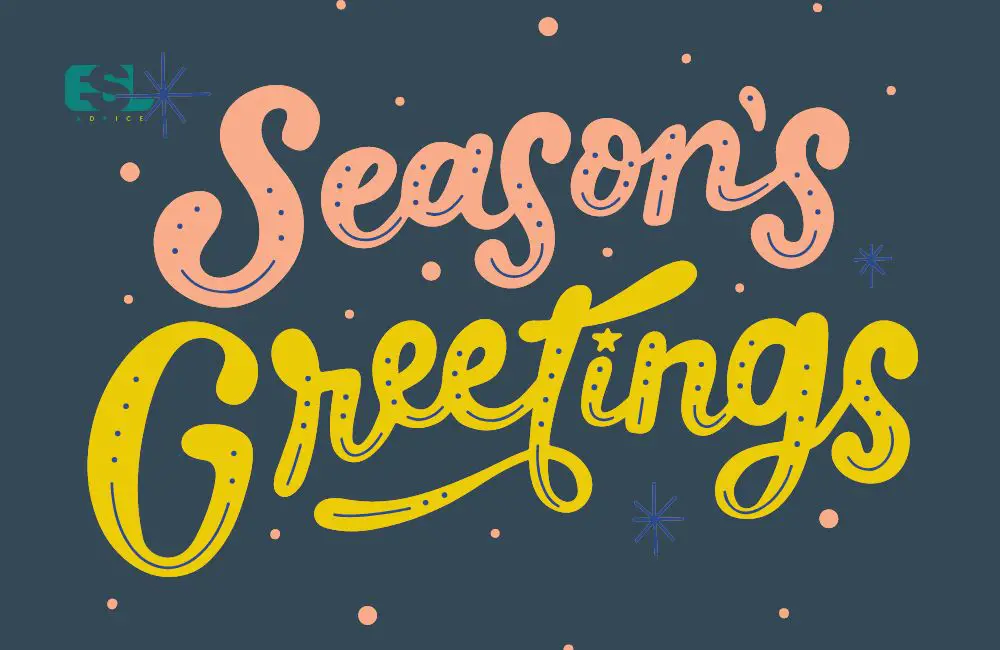As an English as a Second Language (ESL) expert, I’ve been fascinated by the richness and diversity of English greetings. One aspect that stands out, in particular, is how English speakers often incorporate the season or time of year into their greetings. Let’s dive in and explore this intriguing element of English conversation.
For seasonal greetings in English, say “Happy Spring!” or “Enjoy the beautiful spring weather!” for spring. For summer, you could say, “Have a great summer!” or “Stay cool!”. Autumn might warrant “Happy Fall!” or “Enjoy the fall colors!” while winter can be greeted with “Happy Winter!” or “Stay warm!”
However, mastering these seasonal greetings in English goes beyond mere memorization. It’s about understanding the cultural context, using these greetings in real-life situations, and learning from native speakers.
Are you looking for a book or a guide to help you learn and improve your English? You may try English Made Easy Volume One: A New ESL Approach: Learning English Through Pictures (Amazon Link).
Later in this post, we’ll further explore the unique English expressions for each season and offers practical tips to employ them correctly in your conversations. So, keep reading to boost your fluency and make your English sound more natural and culturally informed.
Table of Contents
- 1. Spring Greetings Examples
- 2. Summer Greetings Examples
- 3. Autumn (or Fall) Greetings Examples
- 4. Winter Greetings Examples
- 5. New Year Greetings Examples
- 6. Birthday Greetings Examples
- 7. Christmas Greetings Examples
- 8. Thanksgiving Greetings Examples
- Effective Tips for Mastering Seasonal & Greetings in English
- 1. Understand the Cultural Context
- 2. Memorize Through Association
- 3. Practice in Real-Life Situations
- 4. Observe and Learn
- 5. Customize the Greetings
- 6. Use Online Resources
- 7. Don’t Worry About Mistakes
- 8. Immerse Yourself in the Culture
- Sample Conversation: Seasonal Greetings in English
- Conclusion
- 10 Frequently Asked Questions Related to Seasonal Greetings in English
Understanding the names of the four seasons in English is fundamental. They are Spring, Summer, Autumn (or Fall), and Winter. These seasons each have unique characteristics and traditions that shape how English speakers formulate their greetings.
1. Spring Greetings Examples
Spring is known for its vitality, fresh blossoms, and the awakening of life after a chilly winter. As such, springtime English greetings often capture this essence of rebirth and renewal.

- Happy Spring!
- Enjoy the beautiful spring weather!
- Spring has sprung!
- Welcome to springtime!
- Wishing you a season full of renewal!
- Here’s to a season of growth and prosperity!
- Isn’t spring beautiful!
- Let’s enjoy the spring season!
- May the spring fill your life with sweetness!
- Wishing you all the joys of the season!
- It’s finally springtime!
2. Summer Greetings Examples
Summer is celebrated as a season of vacations, sun-kissed beach outings, and long days filled with sunshine. This season’s greetings often reflect the joy and relaxation that summer brings.

- Have a great summer!
- Stay cool!
- Enjoy your summer break!
- Let the summer begin!
- May your summer be filled with adventures!
- Sunny days are here again!
- Have a sun-tastic summer!
- Wishing you endless summer fun!
- Keep calm and enjoy the summer!
- Embrace the sunshine!
- Here comes the summer sun!
3. Autumn (or Fall) Greetings Examples
Autumn, also referred to as fall, is distinguished by the falling of leaves, the cooling temperatures, and the onset of the holiday season. The greetings during this time encapsulate the beauty and the changes that come with this season.
- Happy Fall!
- Enjoy the fall colors!
- Stay warm!
- Welcome to the season of harvest!
- May you fall in love with Autumn!
- Wishing you a season filled with beautiful moments!
- Autumn is a second spring when every leaf is a flower!
- Embrace the beauty of Autumn!
- Enjoy the sweater weather!
- Fall is in the air!
- May your Autumn be filled with joy!
4. Winter Greetings Examples
Winter, the coldest of the four seasons, is known for its snow-covered landscapes in many places. Yet, it’s also a time teeming with holidays and festive cheer, reflected in the greetings English speakers use.
- Happy Winter!
- Stay warm!
- Happy Holidays!
- Bundle up; it’s winter time!
- May your days be merry and bright!
- Wishing you a winter wonderland!
- Enjoy the cozy winter nights!
- Stay frosty!
- Let it snow!
- Have an ice day!
- Keep calm and wait for the snow!
Like the changing seasons, the calendar year is also filled with various important occasions and festivals with specific greetings. From national holidays to personal celebrations, these events offer unique opportunities to exchange well wishes and greetings. Let’s explore some of these occasions and their English greetings.
5. New Year Greetings Examples
The New Year is a global celebration, marking the start of a fresh calendar year. Here are some common English greetings for the New Year.
- Happy New Year!
- Wishing you a prosperous New Year!
- Here’s to a fabulous New Year!
- May the New Year bring joy and happiness!
- Have a successful New Year!
- Cheers to the New Year!
- May the New Year be filled with love and laughter!
- Welcome the New Year with open arms!
- Have a healthy and happy New Year!
- Let’s toast to the New Year!
6. Birthday Greetings Examples
Birthdays are personal celebrations commemorating the day a person was born. Here are some common English greetings for birthdays.

- Happy Birthday!
- Wishing you a fantastic birthday!
- Have a wonderful birthday!
- Cheers to another year around the sun!
- May your birthday be filled with joy!
- Wishing you all the best on your birthday!
- Enjoy your special day!
- Here’s to a fabulous birthday!
- Hope your birthday is as amazing as you!
- Happy Birthday and many happy returns!
7. Christmas Greetings Examples
Christmas is a significant holiday celebrated by millions around the world. Here are some common English greetings for Christmas.

- Merry Christmas!
- Wishing you a joyous Christmas!
- May your Christmas be merry and bright!
- Season’s greetings!
- Have a holly jolly Christmas!
- Wishing you all the happiness your holiday can hold!
- May the spirit of Christmas be with you!
- Enjoy the magic of Christmas!
- Peace, joy, and love to you this Christmas!
- Wishing you a Christmas filled with love and cheer!
8. Thanksgiving Greetings Examples
Thanksgiving is a holiday primarily celebrated in the United States and Canada to give thanks for the blessing of the harvest and the preceding year. Here are some common English greetings for Thanksgiving.

- Happy Thanksgiving!
- Wishing you a Thanksgiving overflowing with peace, love, and laughter!
- Enjoy your Thanksgiving feast!
- May your Thanksgiving be filled with blessings!
- Wishing you a harvest of blessings, good health, and good times!
- Gratitude is the heart’s memory. Wishing you a Happy Thanksgiving!
- May your stuffing be tasty and your turkey plump!
- Hope your Thanksgiving is stuffed with happiness!
- Have a memorable Thanksgiving!
- May the blessings of this Thanksgiving fill your heart and home!
Remember, these greetings can be personalized and used in different contexts, making your English more natural and festive during these important occasions.
Effective Tips for Mastering Seasonal & Greetings in English
As an English as a Second Language (ESL) learner, you are embarking on a journey that’s not just about mastering grammar rules or expanding vocabulary. Learning English is also about embracing the cultural richness and diversity encapsulated within the language. An integral part of this journey is understanding and using seasonal and occasional greetings that add authenticity, context, and color to your conversations.
Whether it’s wishing someone a “Happy Spring!” as the world blossoms into new life or exclaiming “Let it snow!” during the heart of winter, these greetings offer a unique way to connect and communicate in English. Similarly, greeting someone with a cheery “Merry Christmas!” or expressing gratitude on Thanksgiving is crucial in interpersonal interactions during these festive occasions.
Mastering these seasonal and occasional greetings might seem daunting initially, but with the right strategies and consistent practice, you can learn to use them confidently and easily. This post provides effective tips to help you navigate this intriguing element of English language and culture, enriching your learning experience and helping you sound more like a native speaker. Let’s dive in and explore these tips.
1. Understand the Cultural Context
English is a language with diverse cultural influences. Seasonal and occasional greetings are often tied to specific traditions, celebrations, or natural events that carry a cultural or historical significance. Understanding the cultural nuances associated with each greeting makes you less likely to use it out of context.
For instance, saying “Happy Thanksgiving!” is appropriate for the fourth Thursday in November in the United States, as it’s dedicated to expressing gratitude for the past year’s blessings. Understanding the occasion helps you use the greeting correctly.
2. Memorize Through Association
The association is a powerful tool for memory. You’ll find it easier to remember when you connect a greeting to a visual image, personal experience, or a certain feeling.
For example, imagine the brilliant colors of falling leaves when you think of “Enjoy the fall colors!” or the warmth of a cozy fireplace for “Stay warm this winter!” Visualizing these scenarios in your mind can create a strong link between the greeting and its appropriate use.
3. Practice in Real-Life Situations
Language learning is significantly enhanced when applied in practical, real-life situations. Regularly using seasonal and occasional greetings in your daily communications can help them become second nature to you.
Try incorporating these greetings in conversations, text messages, emails, or social media posts. Also, don’t shy away from using them in both formal and informal settings, as it would help you understand the flexibility of these greetings.
4. Observe and Learn
Learning by observing native speakers is a valuable strategy. Watch English movies, listen to English podcasts, or engage with native speakers in conversations. Pay attention to how and when they use certain greetings. This practice will provide you with firsthand insights into the cultural and linguistic subtleties that textbooks might not offer.
5. Customize the Greetings
Personalization can add a unique touch to your greetings, making them more heartfelt and authentic. Depending on your relationship with the recipient, you can modify the greeting to reflect personal details or shared experiences.
For example, if you’re wishing a friend a happy birthday, you might say, “Happy Birthday, Alex! Here’s to another year of fantastic adventures together!”
6. Use Online Resources
The internet is a treasure trove of resources for language learners. You can find numerous websites, online courses, language apps, and forums where you can learn and practice seasonal and occasional greetings. Many of these platforms also offer interactive exercises and quizzes, making learning more engaging.
7. Don’t Worry About Mistakes
Language learning involves a lot of trial and error. Making mistakes’s normal, and embracing them as part of your learning journey is important. Remember, every mistake offers an opportunity to learn and grow. Don’t let the fear of errors keep you from practicing and experimenting with new greetings.
8. Immerse Yourself in the Culture
Immersing yourself in English-speaking cultures can provide a deeper understanding of seasonal and occasional greetings. Participate in cultural events, celebrations, and traditions to experience these occasions firsthand. This immersive experience can offer valuable context and make the greetings more meaningful to you.
By applying these tips, you can steadily enhance your proficiency in using English seasonal and occasional greetings. The process may require time and patience, but remember, consistent practice is the key to mastery.
Sample Conversation: Seasonal Greetings in English
Situation: Two colleagues, Mark and Lisa, meet in the office lobby during the winter holiday season.
Mark: Hey Lisa! Merry Christmas and a Happy New Year to you and your family!
Lisa: Thank you, Mark! Season’s Greetings to you too. How are you planning to spend the holidays?
Mark: I’m visiting my parents upstate. It’s been a while since we had a white Christmas together. How about you?
Lisa: That sounds lovely. I’m hosting a small Hanukkah celebration at home. You’re welcome to drop by if you’re around!
Conclusion
Seasonal greetings are a wonderful way to connect with people and celebrate the changing of the seasons. They add variety and color to our conversations, and they can make your English sound more natural and fluent.
I hope you find this post useful in expanding your English vocabulary and confidence. Remember, like any aspect of language, the key to mastering these greetings is regular practice and a willingness to make mistakes and learn from them. Happy learning, and enjoy the seasons!
10 Frequently Asked Questions Related to Seasonal Greetings in English
1. What are common greetings for the winter holiday season?
Common greetings include “Merry Christmas,” “Happy Hanukkah,” “Season’s Greetings,” and “Happy Holidays.”
2. How can I greet someone for the New Year?
“Happy New Year,” “Best wishes for the New Year,” and “Here’s to a prosperous New Year” are popular choices.
3. Are there special greetings for Thanksgiving?
Yes, “Happy Thanksgiving” and “Wishing you a harvest of blessings” are commonly used.
4. How can I greet someone for Easter?
You can use “Happy Easter” or “Wishing you a joyous Easter celebration.”
5. Are there greetings specific to non-religious celebrations?
Certainly! For example, during Halloween, “Happy Halloween” or “Trick or Treat” are popular.
6. How can I greet someone for Valentine’s Day?
“Happy Valentine’s Day” or “Wishing you a day filled with love” are suitable greetings.
7. What are some greetings for the spring season?
“Happy Springtime,” “Wishing you a bright and blooming spring,” and “Spring is in the air!” are cheerful greetings.
8. Are there any greetings for autumn or fall?
Certainly! “Happy Fall,” “Enjoy the beauty of the season,” and “Autumn greetings” capture the essence of fall.
9. Can seasonal greetings be used in a professional setting?
Yes, but it’s essential to ensure they are inclusive and appropriate for the context. “Season’s Greetings” or “Happy Holidays” are safe choices.
10. How can I respond to a seasonal greeting?
You can reciprocate the greeting, like replying with “Merry Christmas” if someone wishes you the same, or simply say “Thank you, same to you!”





